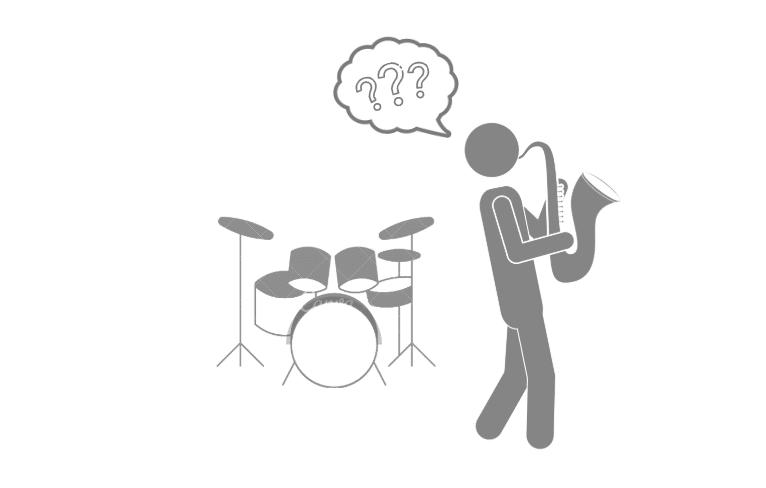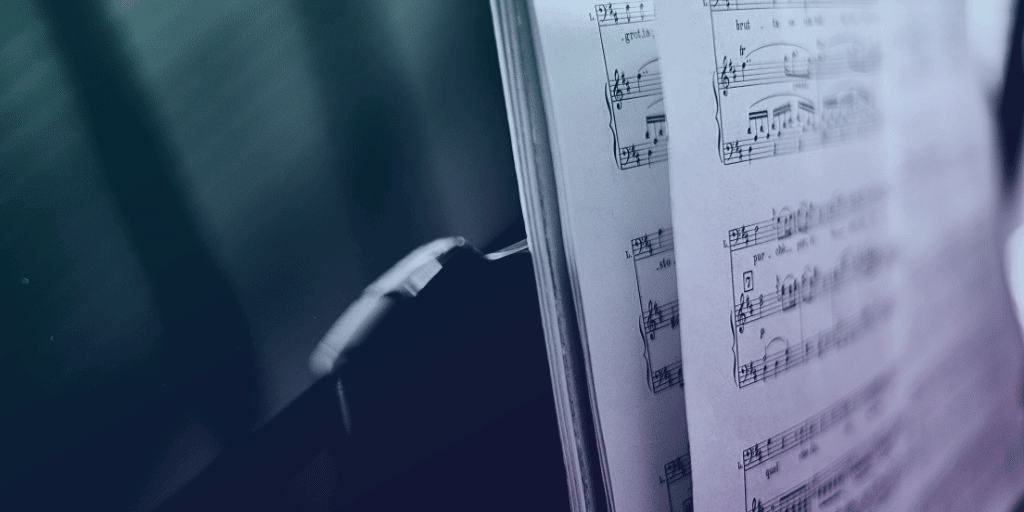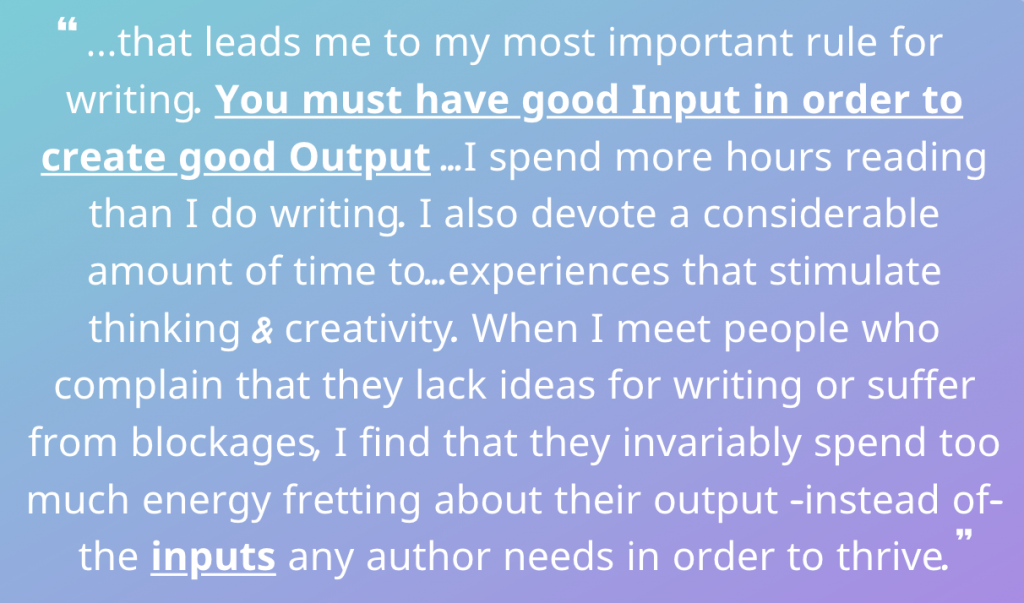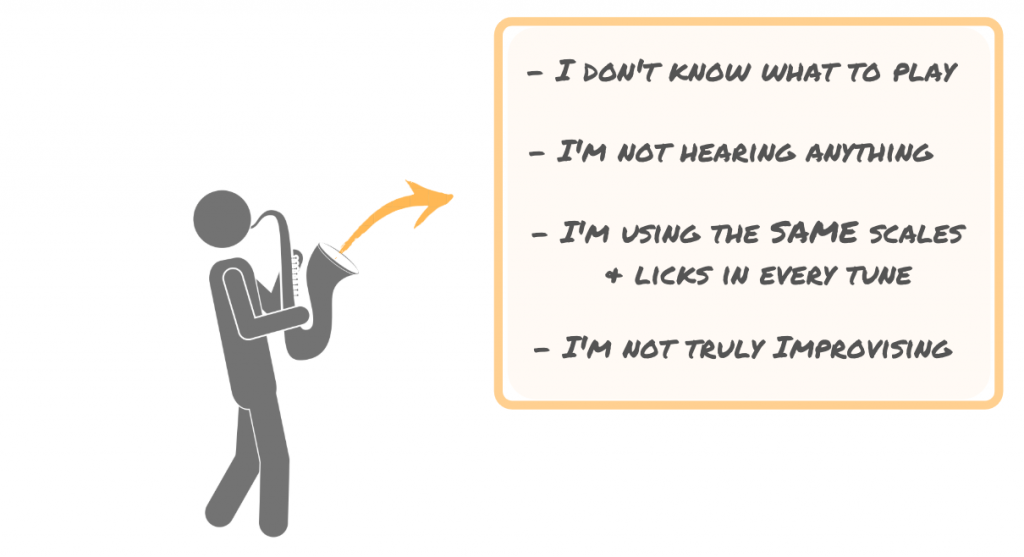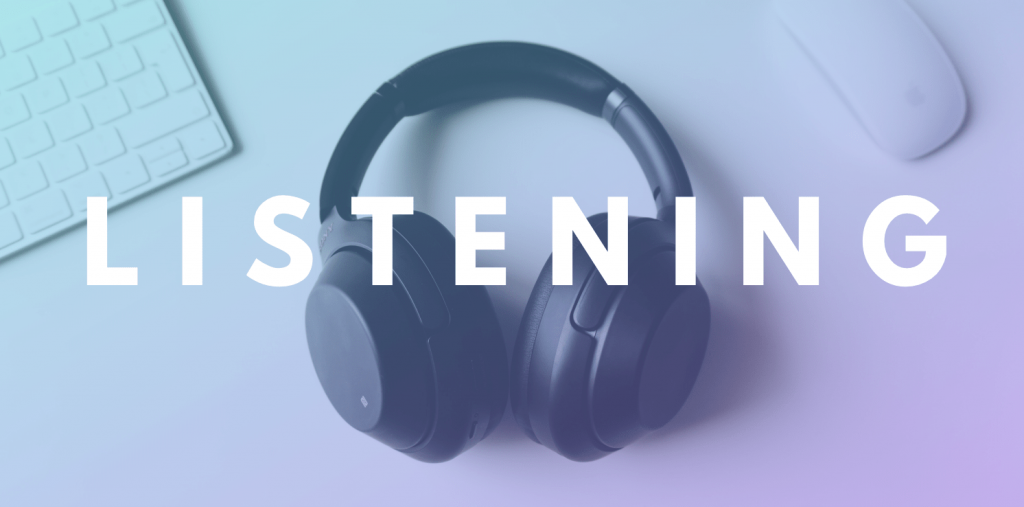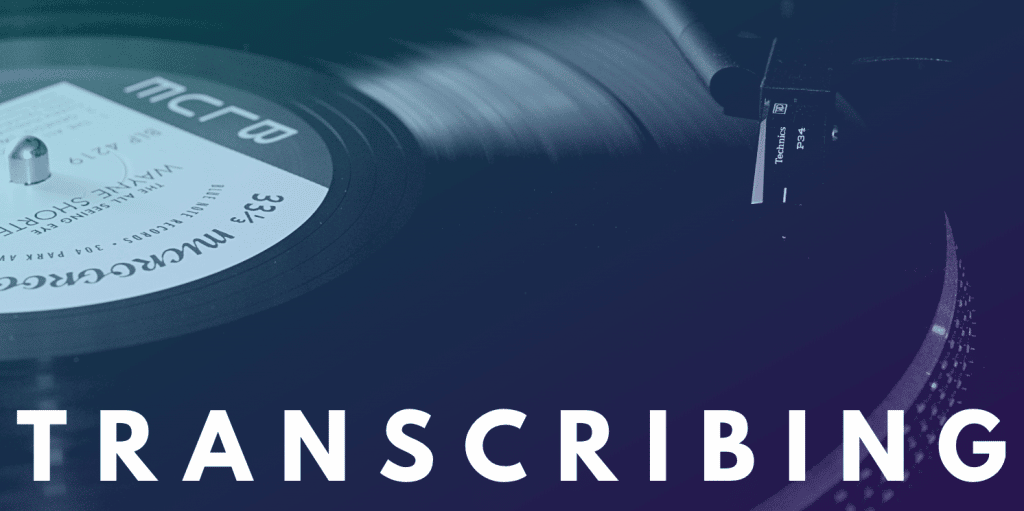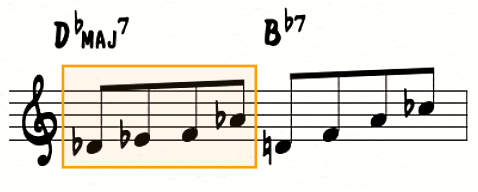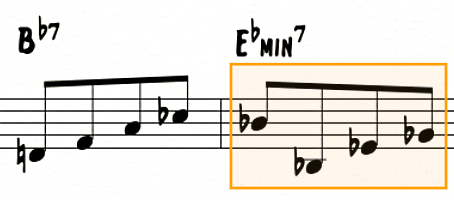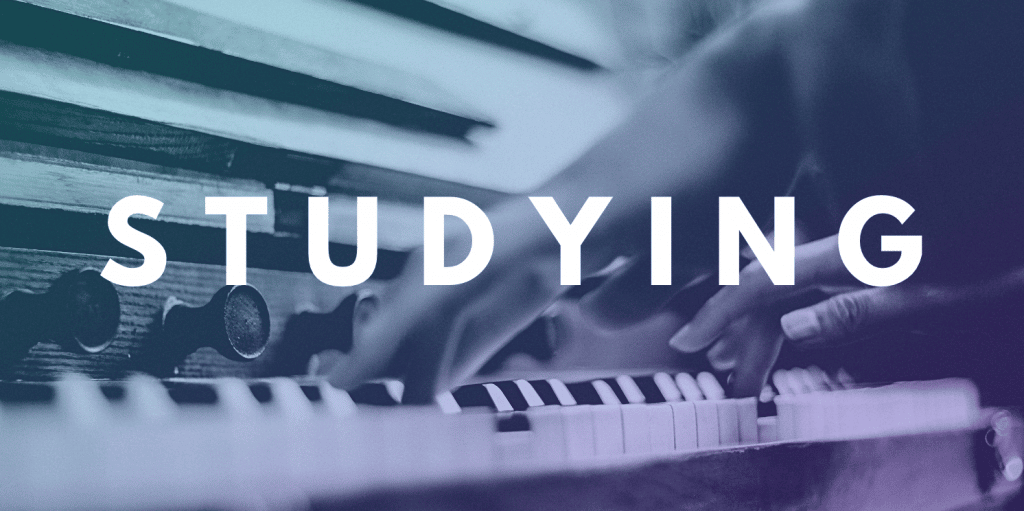You’re staring at a chord progression on a lead sheet. Thinking through the first few bars of a jazz standard. You’re getting ready to start your solo and carefully choosing the first phrase you’ll play…
It’s finally time to show off the stuff you’ve been working on. Time to create music on the spot instead of running another set of tedious drills in the practice room. But there’s one catch:
You can’t think of anything to play. Nada.
You’re not hearing anything in your head, you’re out of ideas, and you’ve run headfirst into a creative wall. So you do what we all do in this situation – you fall back on the SAME scales and licks you play in every solo.
But let’s be real, that’s not improvising or being creative.
This situation happens to every improviser at some point in their musical life. It might be on the Blues or Rhythm Changes or on tunes like Confirmation and Giant Steps. In fact, it’s one of the most common things you hear from all levels of players striving to get to the next stage of their musicianship.
“…I memorized the chords, I understand the theory, I can hear the changes going by, but I just can’t come up with anything good to play.”
I know the feeling well. It’s frustrating, overwhelming, and demoralizing, especially when the point of all your practice is to be more creative when you get up there to solo!
So how do you fix this? How do to find your creativity again? What can you do to get the ideas flowing when you need it the most??
In this lesson we’ll show you how the problem (and solution) begin before you even start your solo. And we’ll give you three practice techniques that will help you solve the problem for good.
Let’s get started…
Finding the root of the problem
The idea of a creative block isn’t unique to improvising, or even musicians for that matter…
It can happen to anyone trying to come up with ideas on the spot – a writer staring at a blank page, a comedian working out a punchline, or a chef trying to come up with the perfect menu.
Like improvisation, there’s a goal, a need to create, and pressure come up with ideas. And like improvisation, there are also creative blocks. Times where you’re out of ideas, bored with what you have, and struggling to come up with something new.
However, the problem in these situations isn’t what most people expect. It’s not about talent or work ethic, and it isn’t about repeating more of the same until you get it right. It goes back to something much simpler…
Rather than what you’re producing, the root of the problem goes back to what you’re taking in.
The writer Ted Gioia explains it well in the quote below about writer’s block:
And the same is true for musicians too.
When we think about improvisation, we immediately think about the moment where you have to create music on the spot. “What am I going to play??”
We fixate on the moment of output…
When we encounter these difficult situations it’s all too common to think that we need more practice. That we must do the same thing over and over again until we eventually hit a breakthrough!
So we practice for hours with play-a-longs, we make lists of tunes and run the changes over and over again, and we go to jam sessions. Sure it’s practice, but it’s missing the source of the problem.
By fixating on your output, you’re only looking at one half of the equation, ignoring the process that led up to your solo. Remember, great ideas don’t pop up out of nowhere and amazing solos don’t just happen by chance.
If you’re unsatisfied with your output, you need to go back and take a serious look at your input…
Rather than focusing on what’s coming out, the question you need to ask yourself is what musical information is coming in??
3 Essential Types of Input for Improvisers
The truth is every musician could stand to spend a little more time improving the quality of their input…
This means focusing on the activities and habits that lead up to the moment of creating a solo. What are you doing in your daily routine before you even think about improvising?
Remember, everything that you play is the result of what you are absorbing musically each day. Think of it like your musical diet…
What you put into your mind, your ear, and your technique on a regular basis is what you’re going to get out when it’s time to solo. And the truth is, a lot of musicians are starving themselves and wondering why they have no ideas!
If you improve the quality of your input on a consistent basis, you’ll find yourself generating new skills and creative ideas every time you improvise.
Here are 3 types of musical input that you should incorporate into your routine everyday:
1. Listening
It sounds obvious, but you need to listen to become a great improviser…
Listening is the main source of input you have as a musician and the number one thing that you should be doing everyday as an aspiring soloist.
Rather than trying to create solos for hours on end, listening is the way you’ll absorb the important musical information and ideas that you need to create better solos.
Simply put, if you want to continually be creative and improve, you need to be listening as much (or more!) than the time you’re spending improvising.
Aim to devote time to listening everyday. There are different types of listening and different goals that you get out of each session:
- Casual listening: Listening for fun. Absorbing the vibe of a recording and getting inspiration. Finding new sounds, new players, new grooves, new ideas, etc.
- Focused listening: Devoting all your attention to the task of listening. Putting on a recording and focusing on sound, the harmony, time, melodic ideas, and phrasing.
- Isolated listening: Repeated listening to one specific part of the recording to ingrain it in your ear. Zero in on a particular phrase, a progression, or an interval until you have it down and can sing it.
All three types of listening are essential for gathering new musical information on a daily basis.
Think of these listening sessions as your main source for inspiration and musical ideas. When you go to improvise, this is what you’ll be drawing from, this is what will be in your ear!
Even a little casual listening each day can make a difference in your approach to improvisation. For instance, you might like the Coltrane tune Blue Train:
By listening to this recording first thing in the morning and right before you fall asleep everyday for a week, you’ll subconsciously absorb the groove, the sound of the soloists, and the harmonic and melodic ideas at work.
Then when you go to improvise, instead of trying to play with nothing in your ear, now you’ll have an aural reference point and creative model to strive for. All from something as easy as a few listening sessions!
But listening is only the first step to finding your creativity…
2. Transcribing Musical Ideas
The second type of musical input you should focus on as an improviser is transcription…
Transcribing is essentially absorbing musical ideas and techniques directly into your ear and your technique. Input that will make a tangible difference when it’s time for you to solo.
The process of transcribing is essentially ear training, learning language, and developing technique all rolled up into one exercise.
Keep in mind that transcribing doesn’t mean that you have to write the notes down on a piece of paper. It’s more about the process of absorbing and ingraining new musical information by ear.
You might figure out the melody to a tune that catches your ear, a chorus of the blues from your favorite player, or a harmonic pattern from Michael Brecker…
Remember, you don’t have to spend hours figuring out entire solos, you can simply transcribe one idea to see creative benefit in your playing.
For example, take this line from Clifford Brown on Stompin’ at the Savoy:
It’s true that you could just learn this line as is and use it in your solos. But there are also a number of important melodic and harmonic concepts buried inside that can be added to your musical toolbox:
- Major language & techniques
- V7 language & techniques
- Minor language & techniques
- V7 to I techniques
- ii-V-I & Tritone Substitution
All of this from two measures of music…
You can take any one of these pieces of jazz language, isolate it, and practice it in every key. You might vary the rhythm, intervallic content, or even harmonic application – it’s up to you.
Transcribing isn’t just about memorizing notes and repeating them in your solos. If you have the right approach to the process, you can find a world of musical possibilities and inspiration.
This is why transcribing is so valuable for every musician! Check out this lesson for an in-depth look at the transcription process.
As you head into the practice room, don’t feel pressured to transcribe entire solos or rush to complete as many as you can. Transcribing something as simple as one phrase every month or even one new line a week will give you an abundance of creative ideas.
3. Studying New Musical Concepts & Approaches
The overarching concept here is pretty simple – if you’re always searching for new musical ideas and taking in new information, you’ll never feel stale or be stuck without any options to play.
And there are unlimited places from which you can gather creative inspiration and ideas!
As part of your daily practice routine, aim to include study of the nuts and bolts of music, from melody and harmony to theoretical concepts and great compositions.
Here are a few places to get started…
- Study great compositions and composers from classical works, to movie scores, to world music, to Wayne Shorter tunes.
- Deconstruct a jazz standard piece by piece and figure out why it works, like we did with It Could Happen to You in this lesson.
- Take a single chord or voicing and explore it from the root all the way to the upper structures.
- Take a bebop scale or a pentatonic scale and explore the different ways you can play it and apply it to a chord or progression.
- Devote a day to studying the ins and outs of a particular chord relationship: I to IV, major to parallel minor, iii-VI, etc.
- Experiment with the lydian sound, aim to master half-diminished chords, or think about altered V7 chords
- Go to the piano and play through the melody and progression to a tune you’re learning. Understand how each chord fits into the bigger picture.
- Compose a tune of your own.
Devoting time to studying these ideas will give you inspiration, insight, and tools for your own musical approach. It’ll open up your mind and your ear to new possibilities that you wouldn’t have thought of otherwise.
It’s also important to remember that your “input” shouldn’t be restricted to music theory, chord progressions, and jazz standards…
It can (and should) include listening to interviews with your favorite musicians, experiencing works of art, reading, exploring philosophy, and learning & studying new skills unrelated to music.
This is how the greatest players approach life and music. They aren’t one sided musicians concerned with scales and tunes every hour of the day. Everything they study, read, and experience in life informs their approach to music.
Better input = better output
As musicians we are naturally concerned with performing and soloing. Those moments where we have to get up and create melodic lines out of thin air.
…but the counterintuitive thing is that to do this, the majority of your focus should be on your input.
It’s all about the daily journey of learning new things, discovering new information, and absorbing new ideas.
Because if you never change your input, your improvising is going to stay the same. It doesn’t matter how many hours you practice with a play-a-long, how many jam sessions you go to, or how many tunes you memorize.
The good news however, is that even a small input can make a big difference in your approach. Some daily listening, a couple transcribed phrases, or a few hours spent studying musical concepts are all you need to invigorate your creativity.
If you put your focus on the things you’re absorbing, your output will take care of itself. So stop worrying about the music you can’t play! It’s the music you take in that matters the most…

